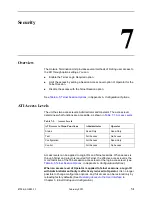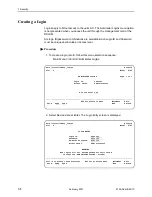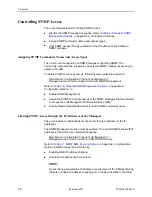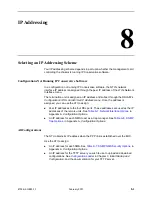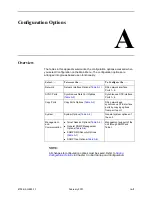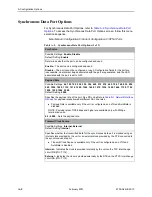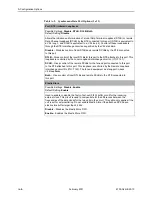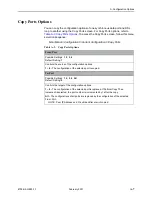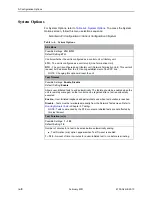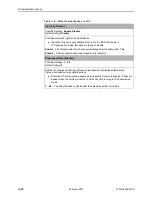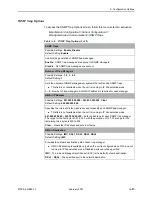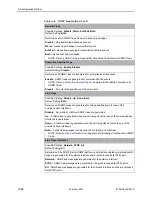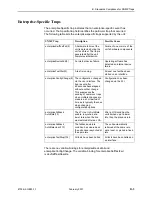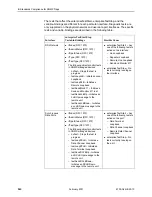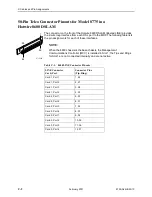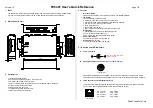
A. Configuration Options
8700-A2-GB25-10
February 2001
A-9
Management and Communication Menu
The Management and Communication menu includes the following:
Telnet Session Options (
Table A-5
)
General SNMP Management Options (
Table A-6
)
SNMP NMS Security Options (
Table A-7
)
SNMP Trap Options (
Table A-8
)
Telnet Session Options
To access the Telnet Session Options screen, follow this menu selection
sequence:
Main Menu
→
Configuration
→
Current Configuration
→
Management and Communication
→
Telnet Session
Table A-5.
Telnet Session Options (1 of 2)
Telnet Session
Possible Settings: Enable, Disable
Default Setting: Enable
Specifies if the unit will respond to a Telnet session request from a Telnet client on an
interconnected IP network.
Enable – Allows Telnet sessions between the unit and a Telnet client.
Disable – No Telnet sessions allowed.
Telnet Login Required
Possible Settings: Enable, Disable
Default Setting: Disable
Used to secure access to the ATI through a Telnet session. Login IDs are created with a
password and access level. Refer to
Creating a Login
in Chapter 7, Security.
Enable – Security is enabled. When access is attempted via Telnet, the user is prompted
for a Login ID and password.
Disable – No Login required for a Telnet session.
Session Access Level
Possible Settings: Administrator, Operator
Default Setting: Administrator
The Telnet session access level is interrelated with the access level of the Login ID.
Refer to
ATI Access Levels
in Chapter 7, Security, for more information.
Administrator – This is the higher access level, permitting full control of the unit. Access
level is determined by the Login ID. If Telnet Login Required is disabled, the session
access level is Administrator.
Operator – This is the lower access level, permitting read-only access to status and
configuration screens.

